Budapest Weather: Seasonal Overview and Planning Your Visit
Budapest has four very different seasons. Each one gives you a totally different feel when you visit. The city gets really hot summers and pretty cold winters because of its continental climate. The Danube River makes everything more humid, which means the heat feels hotter and the cold feels colder. If you know what weather to expect, you can pack the right stuff and plan activities that work no matter when you go.
What Each Season is Like
Spring (March-May)
Spring in Budapest starts off pretty unpredictable in March. We've been there when it still felt like winter, but then everything changes fast into this amazing season. Early spring can still hit you with frost and even some snow, and the winds are pretty chilly so you need layers. But by April, things get much better with warmer days and all the trees starting to bloom in the parks.
May is when the weather gets really nice. During the day it often hits 20-25°C. The whole city comes alive with colorful flowers everywhere along the streets and in parks. We noticed that May gets a bit more rain, so we always carry a small umbrella now. This time of year has this special energy because all the outdoor cafés open up again and you get events like the Budapest Spring Festival that make the mild weather even better.
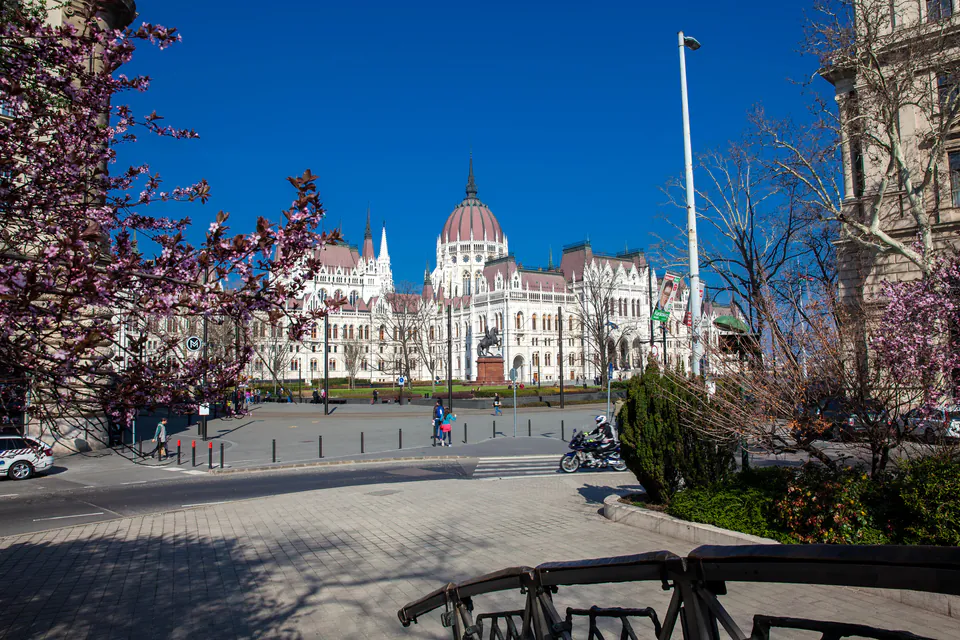
Summer (June-August)
Summer turns Budapest into this sun-soaked playground where the days are long and hot, and the nights are full of life. July and August usually hit 26-28°C during the day, but heat waves push it way above 30°C pretty often. The city gets tons of sunshine in summer months. We're talking about 9-10 hours daily in July, which makes it one of Europe's sunniest capitals.
All that concrete and asphalt holds the heat, so evenings stay warm and perfect for eating outside and walking along the river. When it rains in summer, it's usually quick thunderstorms or sudden showers, especially in June and early July, but they pass fast. The humidity is actually lower than winter, though the hottest days can feel pretty brutal.
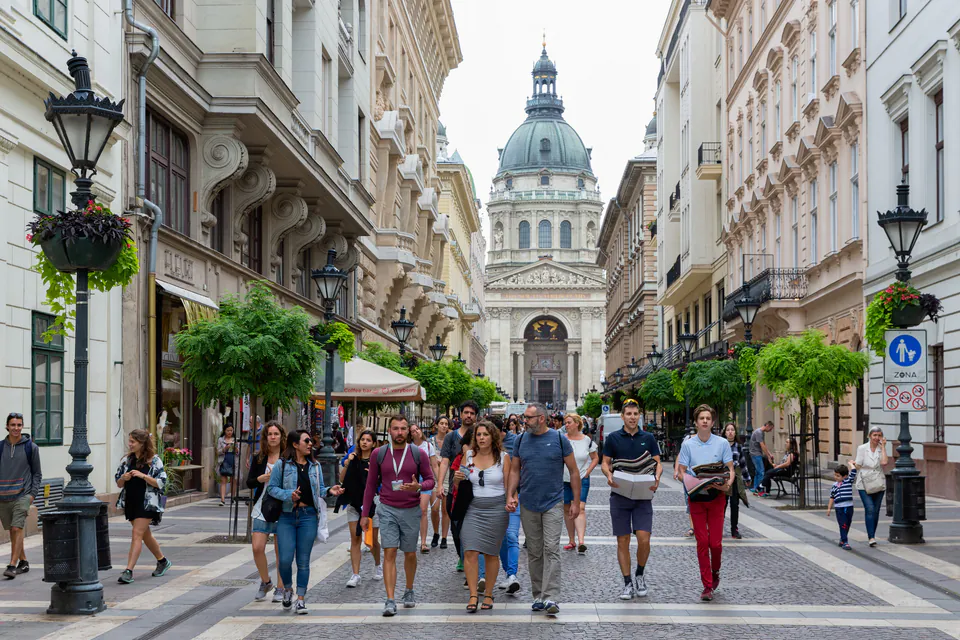
Autumn (September-November)
Autumn gives you a break from all that summer heat. September starts off with nice comfortable warmth and then slowly gets cooler until November gets pretty chilly. Early autumn, especially September, keeps those pleasant temperatures above 20°C but without August's crazy heat. We love this season because you often get "vénasszonyok nyara" (old ladies' summer), which is basically Hungarian Indian summer with mild, sunny days that are perfect for sightseeing.
By mid-October, it gets noticeably cooler and the trees turn into these amazing golden and red displays in all the city parks. November brings much shorter days, often gray and cloudy, with daytime temperatures dropping to single digits and nights that often go below freezing. Late autumn might bring the first frost or even some light snow by the end of the month, which tells you winter is coming.
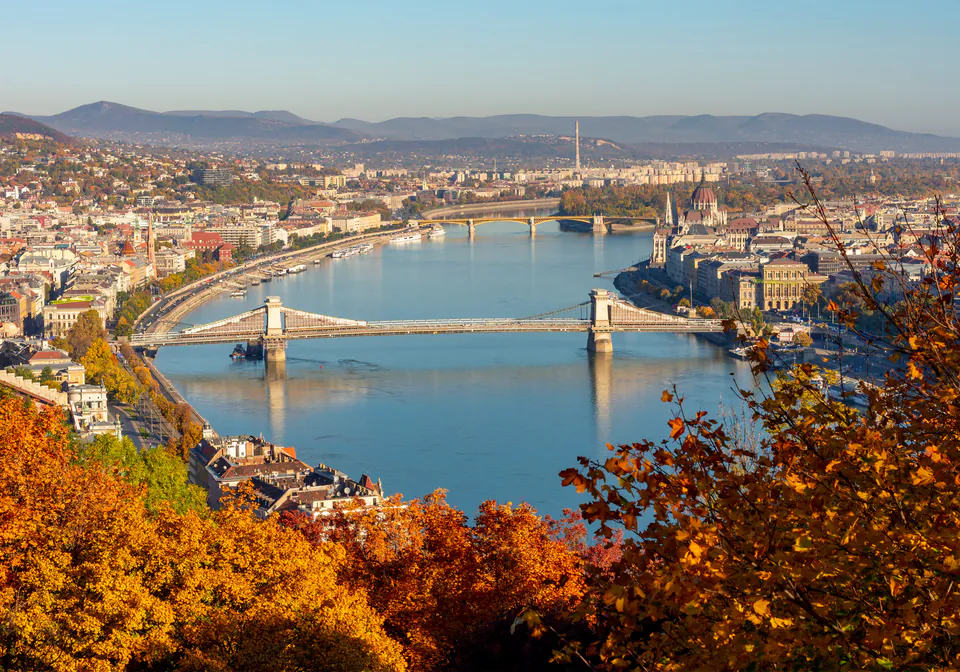
Winter (December-February)
Winter in Budapest gets cold and you get some snow, which creates this magical feeling especially around the holidays. January is the coldest month, with average temperatures around -1 to 0°C. During the day in mid-winter you might only get 2-3°C, and at night it commonly drops to -5°C or even lower.
It snows every winter but usually just light to moderate amounts that often melt in a few days. Sometimes during really cold periods, the banks of the Danube freeze over, which looks pretty amazing. Winter days are short with very little sunshine. We're talking only about 2 hours per day in December, and it's often cloudy.
But even with all the cold, winter transforms Budapest with holiday lights, Christmas markets in the downtown squares, and this unique experience of enjoying steamy thermal baths while it's freezing outside. We know lots of travelers who choose winter specifically for this magical atmosphere and because there are way fewer tourists.
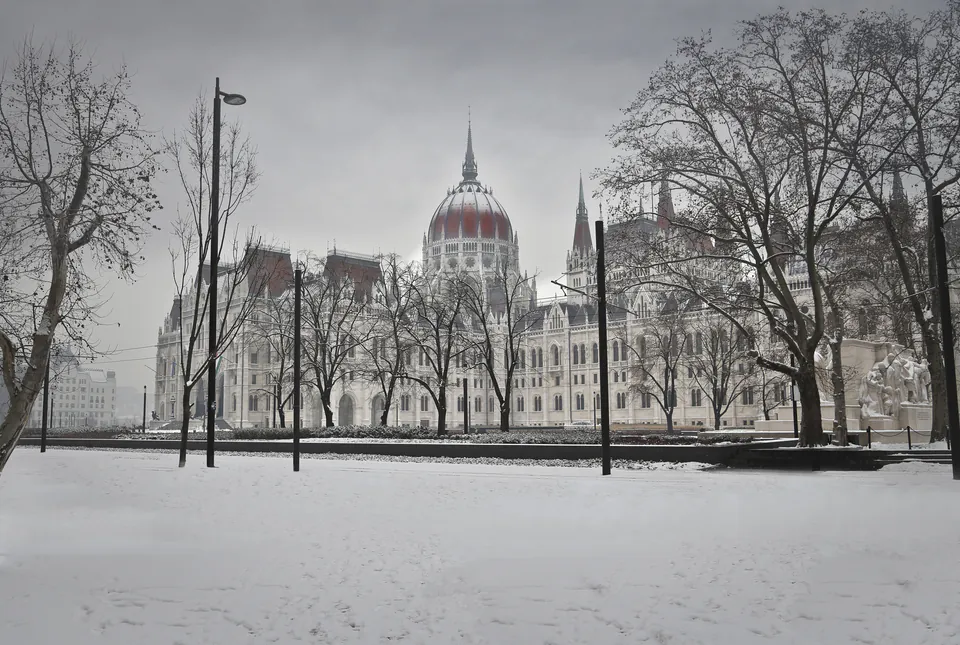
What to Expect Each Month
Knowing what Budapest's weather is like each month helps you plan what to do and what to pack. Here's the breakdown of average temperatures and rain for each month:
Budapest Monthly Weather
| Month | Avg High (°C) | Avg Low (°C) | Precipitation (mm) |
|---|---|---|---|
| January | 3 | -4 | 35 |
| February | 6 | -3 | 30 |
| March | 11 | 0 | 30 |
| April | 17 | 5 | 35 |
| May | 22 | 10 | 55 |
| June | 26 | 13.5 | 60 |
| July | 28 | 15 | 55 |
| August | 28 | 15 | 50 |
| September | 22 | 10.5 | 45 |
| October | 16 | 5.5 | 45 |
| November | 9 | 1.7 | 45 |
| December | 3 | -2.7 | 40 |
Each month has its own personality:
January is the coldest with some snow that makes everything look pretty. It doesn't rain much, and when it does it's often light snow instead.
February keeps the winter going but sometimes you get slightly warmer days near the end. This month usually has the least precipitation all year.
March is when spring starts with slowly warming temperatures, though early March can still feel like winter with cold snaps and even snow.
April gets much better with trees blooming and warmer days, but mornings and evenings are still cool so you need layers.
May has consistently nice temperatures that are perfect for walking around outside, though it's one of the rainier months with some thunderstorms.
June brings summer heat with really long days (around 16 hours of daylight) and the year's highest average rainfall, usually as quick but intense thunderstorms.
July is the hottest month with lots of sunshine and heat waves that can push temperatures into the mid-30s°C. Even though it's summer, rainfall stays moderate.
August keeps July's heat but with a bit less rain, making it super popular for tourism despite those potential heat waves.
September gives you relief from peak summer heat while keeping warm, pleasant days that are perfect for sightseeing without summer crowds.
October cools down fast with autumn colors. Early in the month is comfortable but by the end it gets pretty chilly.
November brings late autumn gloom with much shorter days, lots of overcast skies, and the first frosts.
December starts winter conditions with cold temperatures, some light snow, and that festive holiday feeling all over the city.
When to Go for the Best Weather
The best weather in Budapest happens during late spring (May-June) and early autumn (September-October). We always recommend these shoulder seasons because you get pleasant temperatures that are perfect for sightseeing without summer's brutal heat or winter's cold.
Spring brings blooming flowers and days that get warmer gradually. May has daytime temperatures around 22°C and everything is green and vibrant throughout the city. The Budapest Spring Festival in April adds some cultural stuff to this season too.
Early autumn keeps that comfortable warmth but without summer crowds. September averages 22°C during the day with less rain than spring, which creates perfect conditions for checking out both indoor and outdoor attractions.
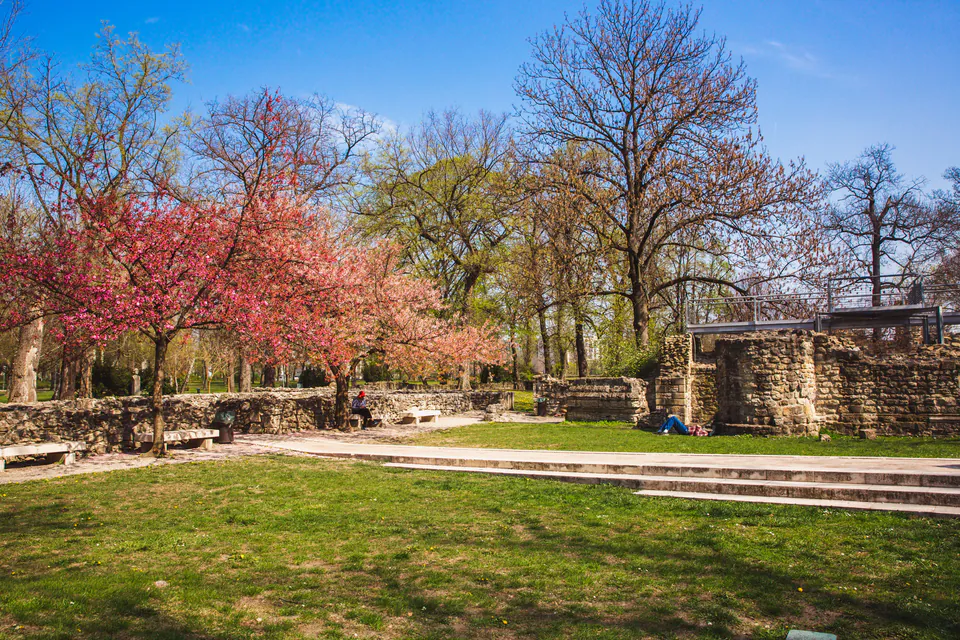
Summer is still Budapest's busiest tourist season even with the potential heat. July and August bring hot temperatures and tons of sunshine, which is perfect for river cruises and eating outside, though you should be ready for heat waves that go over 30°C.
Winter has its own charm with Christmas markets, fewer tourists (except during holidays), and that magical experience of outdoor thermal baths when it's cold outside. December transforms the city with holiday decorations, while January and February give you the most authentic winter experience with potential snowfall.
What to Pack for Each Season
What to Bring in Spring
Spring weather in Budapest needs versatile clothes because conditions change a lot:
- Light layers you can put on or take off as temperatures change
- Light jacket or cardigan for cooler mornings and evenings
- Comfortable walking shoes for exploring
- Small umbrella or packable rain jacket for occasional showers
- Sunglasses and light sun protection for increasingly sunny days
- Scarf for early spring (March-early April) when winds can be chilly
What to Bring in Summer
Budapest summers need light clothes and sun protection:
- Light, breathable clothes (shorts, t-shirts, summer dresses)
- Sun hat and good sunglasses
- High-SPF sunscreen for long days outside
- Comfortable, breathable walking shoes
- Light rain jacket or small umbrella for occasional thunderstorms
- Swimwear for thermal baths and swimming pools
- Light sweater or shawl for air-conditioned museums or evening river cruises

What to Bring in Autumn
Autumn needs adaptable clothes as temperatures slowly drop:
- Layered clothes you can adjust throughout the day
- Medium-weight jacket, getting heavier as autumn goes on
- Waterproof shoes for rainy days
- Umbrella or rain jacket
- Scarf and light gloves for late autumn (November)
- Comfortable walking shoes with good grip
What to Bring in Winter
Winter in Budapest needs warm clothes:
- Warm, insulated coat or jacket (waterproof is better)
- Thermal or wool base layers
- Warm hat, gloves, and scarf
- Waterproof boots with good grip for potential snow and ice
- Swimwear for thermal baths (a unique winter experience)
- Lip balm and moisturizer for dry winter air
Activities That Work with the Weather
When It's Raining
Budapest has tons of indoor attractions that are perfect for rainy days:
The city's famous thermal baths are ideal shelter from bad weather. Iconic places like Széchenyi, Gellért, and Rudas baths have large indoor pools, saunas, and steam rooms where you can relax for hours in mineral-rich waters.
Budapest has so many museums that give you cultural refuge when skies turn gray. Visit the Hungarian National Museum for history, the Hungarian National Gallery in Buda Castle for art, or the House of Terror Museum to learn about 20th-century history.

Historic cafés give you atmospheric places to hang out during rainfall. Spend a rainy afternoon with coffee and cake at famous places like New York Café or Ruszwurm, trying Hungarian specialties like Dobos torta or rétes strudel.
The Great Market Hall (Central Market Hall) is like an indoor paradise of food and souvenirs, perfect for exploring during bad weather. Modern shopping centers like WestEnd or Arena Mall give you more indoor browsing options.
Dealing with Summer Heat
When Budapest's summer temperatures get really hot, several cooling strategies help you stay comfortable:
Check out underground attractions like the Labyrinth of Buda Castle or natural caves in the Buda hills (Pálvölgyi or Szemlőhegyi caves), which stay cool all year.
Outdoor pools and lidos give you refreshing relief. Palatinus Beach on Margaret Island has pools, slides, and fountains that are perfect for families. The outdoor pools at thermal baths like Széchenyi are great for cooling dips.

Danube River cruises give you cooling breezes and shade while you sightsee. Most cruise boats have covered or shaded seating that protects passengers from direct sun.
Cool, thick-walled churches like Matthias Church or St. Stephen's Basilica give you both beautiful architecture and temperature relief. Just remember to dress modestly when visiting religious sites.
During extreme heat, do what locals do. Move slower, stay in shade during midday hours, and consider a siesta or cool indoor activity during peak afternoon heat. Carry a water bottle. Budapest has public drinking fountains for refilling with safe water.
Winter Fun
Instead of avoiding winter weather, embrace what makes Budapest's cold season special:
Thermal baths reach their magical peak in winter. We can't describe how amazing it feels to sit in steaming outdoor thermal pools at Széchenyi Bath while snow falls around you. The contrast between 38°C water and freezing air is unforgettable.
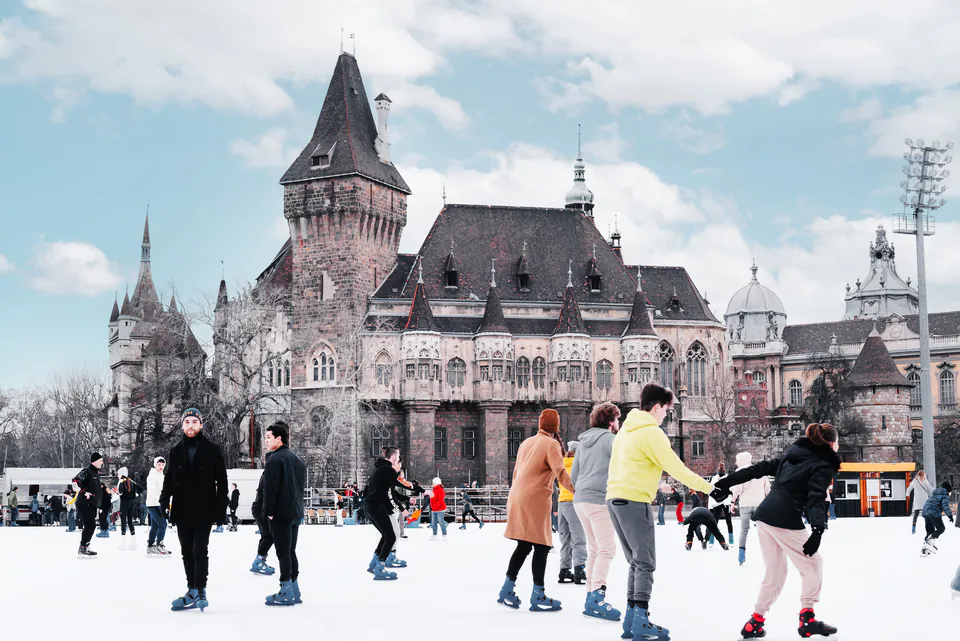
Ice skating in City Park runs from late November through February, if weather allows. The large pond in front of Vajdahunyad Castle turns into one of Europe's biggest outdoor ice rinks. You can rent skates and get fairy-tale castle views.
Christmas markets take over late November and December, with Vörösmarty Square and St. Stephen's Basilica hosting the most famous ones. These markets aren't just for shopping but outdoor dining with specialties like cinnamon kürtőskalács (chimney cakes) and forralt bor (mulled wine).
Evening tram rides, especially on the Number 2 tram along the Danube, become magical experiences in winter when buildings and bridges have decorative lighting. The lit-up Parliament and Chain Bridge create amazing nighttime views.